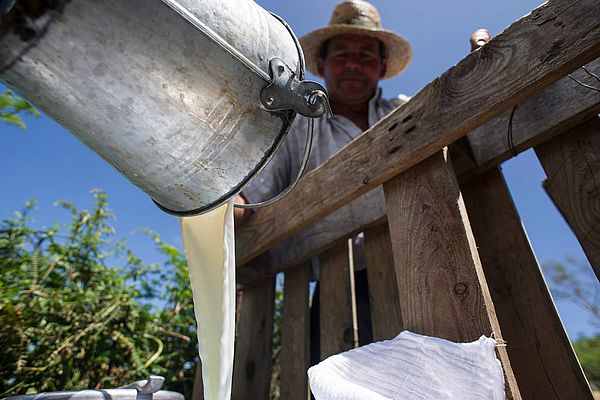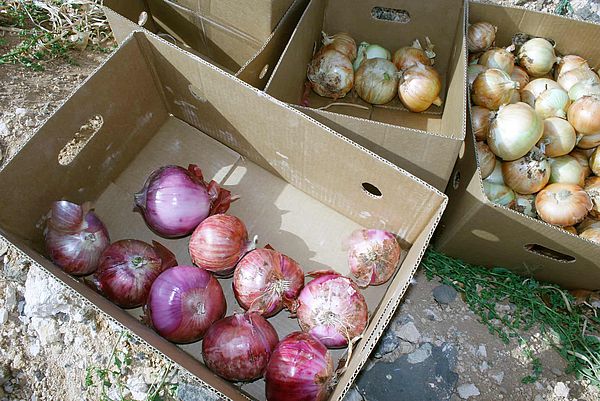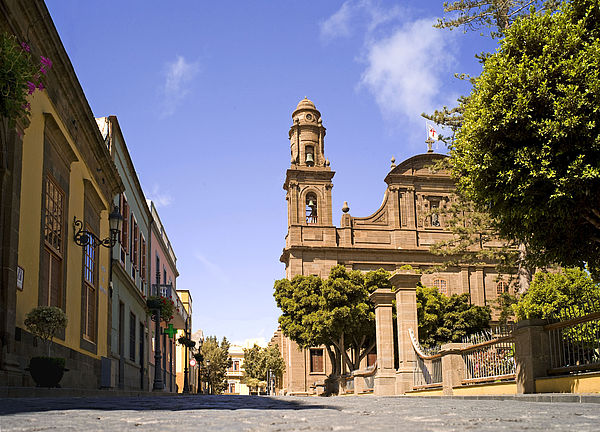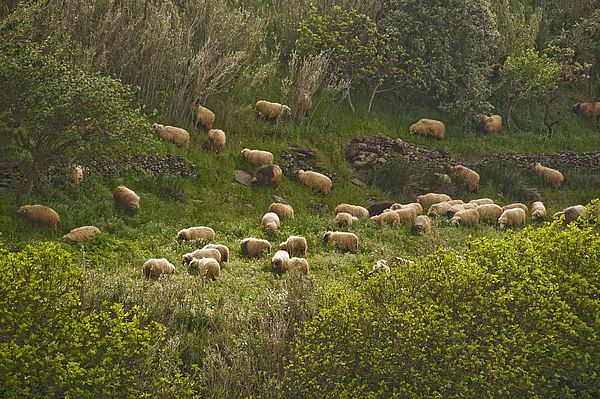Clang, clang, clang! The sheep in the north of Gran Canaria are the last migratory sheep left in the Canary Islands, and the noise as they make as they go along paths, ledges, hillsides and even roads is unmistakable. Around their necks hang great cowbells, the large size being quite appropriate for these occasions for their sheer loudness) as when they reach their destination these are replaced by much smaller ones.

The sheep from Gáldar leave at the start of the summer from places such as Fagajesto, Caideros or Lomo del Palo, bound for higher grazing pastures at the summit, which are west or south facing. They will be back at the green pastureland in the north before autumn sets in, in good time to enjoy the rains, which will dampen the fields and encourage growth of the plants they will feed on.
At the beginning of each summer they are all shorn and skittish, without their characteristic thick masses of wool, following their date with the shearers, while by autumn they are back running around and letting their hair down again at the green pastures around their favourite territory.

As autumn passes onto winter the sheep are giving birth to their offspring: the male lambs will be the main course for partying families around Christmas; the female lambs will be the next generation to provide milk for the cheeses. That’s life for this agricultural society, who now make a living from tourism, but still need to satisfy their bellies – both in food and in spirit – in the old tradition–.
This cycle is repeated year on year, for which each shepherd will have his daily routine: milking, tending and taking the animals out to graze. All this so that those of us who are eternally grateful –or at least should be – can sit down to eat, and enjoy a fine cheese, whether it be with animal or vegetable rennet (in the case of the flower of the wild cardo plant, with a mixture of goat’s and/or cow’s milk), which taste absolutely divine, thanks to the efforts of a few families who strive to keep this unique and traditional product alive.

And if for these people there are popular celebrations such as the Wool Festival or the Cheese Fair, for the land farmers there are others, such as the Onion Festival, because around these parts, to be a “cebollero” (onion producer) goes hand in hand with being “galdense” (from Gáldar), like a nickname for the locales (a term which really exists, in publications such as the Gran Diccionario del Habla Canaria, by Alfonso O’Shanahan).
While we are on the subject of onions, a certain variety of these bulbs with their great natural antibiotic properties can be found in the Canaries, for instance the “Gáldar onion”, so called as to avoid any confusion about their origins, and of course their quality (white onions for frying and boiling, and red onions for salads).
Onions also let their hair down, it must be said. “What onions like is sun and wind: the more the better. The wind keeps the branches down and helps the bulb to come up”, so says one of the local farmers on the subject. Also, as “it can’t be buried too deeply when planted”, when it is born, the bulb mustn’t be stuck under the soil, but instead sticking out. Just add the wind that it likes and you will have long streaky leaves like hair waving about.
